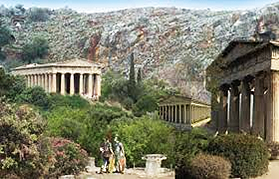“You shall love your neighbor as yourself.” Rom 13:9
Certain passages of scripture, due to our familiarity with them, can seem as captivating as a glass of water: good and essential but hardly exciting or challenging. Such is the case with the “Golden Rule” reechoed by Saint Paul in his letter to the Romans. It has been observed that nearly all religions and philosophies have arrived at some formulation of this principle. Nevertheless, the articulation of it in Leviticus 19:18, is still arguably the first time we see it appear in history. While the command: love your neighbor as yourself seems clear, deeper reflection reveals a more complicated proposition. What is love? Who is my neighbor?
Our Lord gives substance to what could otherwise be an ambiguous moral directive. He does this, among other ways, by means of the Parable of the Good Samaritan (Lk 10:29-37) which anticipates the saving action of his own Passion, Death, and Resurrection. As this Parable demonstrates, neighbor is not so much a relation brought about by proximity of place or some other category of identity (sex, race, ideology), but is rather a reality established when mercy – love for someone in misery – is shown. In the case of the Good Samaritan, neighbor-hood is established between those who would have been ethnic and religious enemies. God reveals: to love your neighbor entails loving your enemy as yourself.
There is a general election coming up. It is very easy not to love our neighbors the politicians and their supporters. I believe there are very few of us, for example, who are not guilty of at least some form of detraction when speaking about those with whom we disagree politically. To love is to will the good of the other for the other’s sake. That doesn’t mean we ignore evil or those who commit evil, but it does mean we must speak with them and about them with the same love that the Savior would have us do. This is certainly a great challenge. And yet, it’s as essential as water.
Fr. Richard Hinkley
 This practice was repeated as temples honoring various emperors were built across the empire over the centuries. Herod the Great’s temple to honor Caesar Augustus in Caesarea Philippi was part of the backdrop behind Jesus’ question to the disciples.
This practice was repeated as temples honoring various emperors were built across the empire over the centuries. Herod the Great’s temple to honor Caesar Augustus in Caesarea Philippi was part of the backdrop behind Jesus’ question to the disciples.